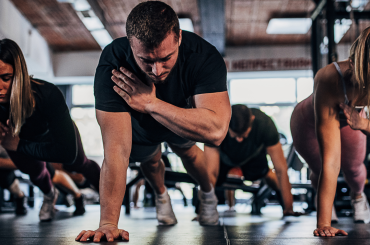- Crisis Management – How To Weather A Corporate Storm - May 31, 2023
- What Are the Current Big Issues in Leadership? - May 25, 2023
- Problem-Solving Techniques – Part 5 - May 18, 2023
The human body is truly amazing. It is in a continuous process of generation and reactivation. Take our skeletons, for example, new bones are made and old bones are broken down about every ten years. Is that not something to marvel at – a remodel/upgrade, every decade…
Keeping your bones healthy and the process of remodelling in balance is excessively important. As we age, the balance of bone remodelling can shift which could result in the loss of bone structure and strength and could lead to diseases such as osteoporosis. And remember, our bones store and supply calcium to all body cells, support the body and protect our vital organs.
Furthermore, the bone marrow provides all types of blood and bone cells to the body. To do justice to this critical part of the body, let us have a look at what affects bone health and also at practices that will ensure bone remodelling stays balanced.
What affects bone health? There are several factors which can affect bone remodelling and taking care of these factors could ensure that the balance of replaced bones stays intact. Let us have a look at these.
Calcium and vitamin D
Calcium prevents diminished bone density. It is suggested that the average adult between 19 and 50, should consume 1 000 milligrams of calcium a day and for those above 50, at least 1 200 milligrams. Vitamin D assists the body to absorb calcium and the recommended intake of Vitamin D for adults is 600 international units a day. Sources of calcium-rich food include:
- Dark leafy greens
- Broccoli
- Tofu
- Nuts and seeds
- Whey protein
- Dried figs
Other vitamins and minerals essential for bones are Zinc, Magnesium, Phosphorus and Vitamins K and A.
Physical activity
Yes, exercise, exercise, exercise. Research shows that actual bodybuilding activities are optimal for bone strength. It is also suggested that you do not need to go to the weight section in the gym to do these exercises, you can use your own body weight and start including the following in your exercise routine:
- Push-ups
- Squats
- Planks
- Sit-ups
- Lunges
- Burpees
Most of these exercises listed above can be done as a warm-up to cardio or as intermediate exercises (exercises you do in between weight-lifting). Spread them between your routines but include them in your workout weekly. Also, we are not all athletes – search for alternatives to each exercise to relate to your fitness level. If, for example, you are older and cannot do squats (because who likes squats right?), you can always sit down on a chair and get up (unassisted) ten to fifteen times repeatedly.
What to avoid
Research has shown that tobacco use contributes to weaker bones whilst alcohol, excessive caffeine or fizzy drinks can increase the risk of osteoporosis. Being underweight could impact your bones as much as being overweight which puts unnecessary pressure on your joints and bones. Eating processed food (which is high in sodium) or too much red meat is unhealthy on many levels.
Gender, age and family history
Women have less bone tissue than men and our bones become thinner and weaker as we age. If osteoporosis is part of your family’s health history, you have to be proactive.
Hormonal health
A high thyroid hormone count could cause bone loss. Dropped estragon and testosterone levels could also cause a loss of bone mass.
Staying healthy and ensuring that your body has all the nutrients it needs to support its daily functions are most beneficial, not just for today but for later in your life as well. Knowing the risks within your health history will allow you to compensate at a younger age by being proactive and not reactive.
Take care of your body – it takes care of you every day in multiple and phenomenal ways!


